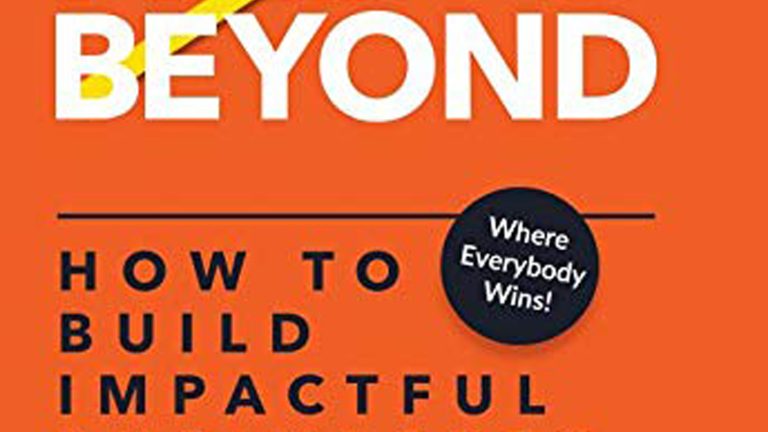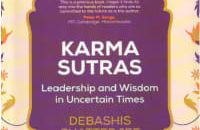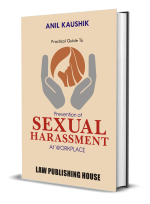
The purpose of a management book is to disseminate new knowledge, stimulate the readers, and provide inputs to improve management practices and organizational effectiveness. The book works well as if it aimed at the above purpose.
The three authors worked together in Widia India (German firm), Bengaluru, India,who dared to lead with unusual management themes they set for themselves. They held the belief that their organisation attempts to ensure all stakeholders win and are satisfied, upholding dharma (righteousness) and making a difference to the people, the company, and the nation. For the three executives and many others, Widia India became a laboratory to learn and grow. Team of the three executives also aimed at inculcating in the employees to learn, grow, and feel a sense of pridefor the work they were doing and the company and for the value they were creating for society.
Widia India was set up by Widia Germany in late 1960s to manufacture tungsten carbide cutting tools in India. The parent company soon disassociated from Widia India when, apart from moderate technology transfer, no other assistance had been extended. The responsibility to generate resources and expand the organisation fell on Srinivasan, the managing director. A favourable factor was that Srinivasan had worked with the group in Germany.
The book is a new philosophy created from concepts that have withstood the tests of time. But the leadership knitted them together for a new outcome. ‘Above and Beyond’is about human values, business ethics, and identifying an overarching purpose beyond profits. It places emphasis on far-sighted vision rather than short-term gains, and a genuine concern for the employees and other stakeholders. Each chapter begins with an engaging
anecdote related to the theme of the chapter. The combined experience and expertise of the leadership were instrumental in raising the company on the above-mentioned vision. These visionaries had backgrounds in manufacturing, engineering, planning, skilling, IT, research, and corporate human resource management.
Also read – HR Drives Innovation Through Talent and Culture : UMA RAO
The book is primarily on and about Widia India.
The book, time and again, emphasises the values. Widia India was deeply rooted in its values, but kept an eye on the needs of the changing times and kept evolving its purpose. The leadership brainstormed amongst themselves rather than writing down lengthy mission statements,thinking that many written declarations remain only partially achieved or even unworked. The company’s purpose comprised:
- Helping the customer even for unknown, unexplored projects.
- Readiness to accept complex, unknown and unattractive projects.
- Exploring and accomplishing projects of national interest,eg,improving productivity in the engineering industry
Widia India aimed at accomplishing these purposes by executing different projects. To mention a few, they designed and provided cutting tools to HMT, a public sector company manufacturing watches, and to the Indian army for armour-piercing shots for their anti-tank ammunition in 1970-71. These were complex, tedious, and unexplored areas. Being committed, Widia India kept the customer requirement and national interest at the top of its mind and executed to the satisfaction of the management.
They steadfastly stick to their values whenever faced with contrary pressures, leading to a loss of time or money. Doing right was part of their philosophy.
A crucial ingredient of their philosophy is the importance they attach to human and social values. The human resource head, in consultation with the CEO, became the best user of these values, particularly honesty, integrity, and respect for all. The leaders and supervisors were inducted into the values that encouraged the employees to use them.Most organisations indulge in these values primarily for their advertising value through their website or
publications. Widia India, on the contrary, never made a show of it but used these ethics to shape their policies. Leaders and supervisors sought opportunities to highlight again and again these to their employees. Mistakes could be forgiven, but not dishonesty. The leadership accepted the people, including their employees, customers, suppliers, and even government officials, as they were, not as they should be.
Such values are required today much more in the industry as advanced technology adoption is rendering the face-to-face conversation and engagement at -work are taking back seat. Many uncommon but intriguing concepts and ideas are explained in the Glossary. Employees could take a stand opposite to that of the senior’s but the latter won’t feel offended here. There are workers who learnt risk-taking and were elevated to managerial positions. R. B. Watson, a toolmaker who rose to the position of vice-president, says. “No one ever was kicked because of failing to achieve,but pulled up for not trying.” To cite another case, Chandra Mohan, who interned in Widia India after his chartered accountancy, worked for 20 years and today is Group President, Finance and Investment, in TAFE, a part of a five-billion-dollar US Group.
While providing tools, quality tools, they also provided technical inputs so that the tools were used correctly for better output.
Also read – People Convert the Business Strategy into Reality : Dr. Vinod Bidwaik
A limited vision limits, they held. Organisational vision, therefore, needs to be comprehensive, clear, and crisp as the comprehensive vision is one that encompasses all stakeholders. A vision statement pulls the organisation in the intended direction. The action of a leader needs to align the vision with the business. Therefore, they were very particular that their vision must link with all the stakeholders so that they too are able to link their roles to the vision and the common good.To them, it is important that the seniors treat their people in a very positive way,to be treated likewise. The book mentions that the comprehensive vision encompasses the Planet, People, and Profits. As the organisation grows through different phases, people’s expectations evolve. If the organisation can anticipate and meet the expectations, synergy is formed as the book mentions. Since it is the people who drive the purpose and vision, the business vision adds to includes”paradigm around the people”. Interestingly, the book also has a graph showing linkages of the phases of the organizational growth with the values and expectations of the stakeholders, to be an excellent organisation.
Remembering late Sumantra Ghoshal, a strategic leadership professor at the London Business School, who stated, “Culture is the smell of a place. It is about people and how they behave.” Commitment to this statement inspired Widia India to create an internal environment that kindled greatness in its people.Some of its other principles were: treating people as people, not
commodities, is important in leadership.When that happens and they feel recognised, they are on their way to being ignited. Widia India believed that only people who feel valued can create value. For building a strong organisational culture, the book emphasises human values and dharmic (righteousness) values. Widia India recruited only freshers, rarely laterals. The idea was to groom the young in the Widia culture. Providing young professionals, the means to grow can win their hearts. Similarly, all-round training in skills and values is a win-win for people and the organisation. “There is one thing that determines the highest performance – psychological safety,” which means, as given in the Glossary,a feeling of empowered and cared for,and an environment to have a say. Another graph shows the “impactful” organization’s growth phases and some of the discussed concepts.
Authors say some employees leave after long service in search of “Psychic Safety,” where people work without fear, i.e., enjoy freedom to express, experiment, and have greater recognition. One graduate trainee, L. Krishnan, left to join a large organisation after 15 years. Now he is the managing director of Taegu Tec India (a Berkshire Hathaway group). To quote him:”The level of freedom to try out things and experiment was very high. The environment urged us to attempt something, even if it didn’t always work. A very important legacy that Widia gave us was the belief that failures should never stop us.When you get exposed to that culture in the early days of your career, it becomes part of your DNA. It shapes the character and way of thinking.”
This and other such statements show you can’t take Widia out of the Widians. The courage, motivation, and drive of Widia India are maintained throughout. The sudden withdrawal of support by the parent organisation when the Indian company was at an early stage didn’t affect the implementation of the new philosophy, as the book says.
Limitations
However, the book has certain limitations, as every book would have. The financial data of Widia India’s performance is not given. It would have shown another dimension of Widia’s sustainability. A literature review would have added to the book’s value. At times, the reader is confused whether the discussion is about Widia India’s practices or laying down a principle.
Conclusion
Nevertheless, when the management world is turning from hard to soft skills, it is time for companies to take a step back from an obsession with tangibles to intangibles. The book represents one such model of creativity and innovation. The precisely and confidently written book of around 200 pages is a must-read for CEOs, managers, business people, as well as for engineering and management students. Apart from Widia India and the Tata Group,and perhaps a few more, there are hardly any value-based companies. The sooner organisations realise the value of intangibles, the greater the outcome that they will obtain from their organisations.
(Book Review Edited by: Ankita Anand)
Authors : R. Srinivasan, Shrihari Udupa, R. Mukund
Publisher : SPOTLIGHT by Notion Press, Bangaluru, India
Price : Rs. 600/-; Hard Bound
ISBN : (Hardcase : 978-1-64733-554-0)
(Paperback : 978-1-64850-868-4)
Stay connected with us on social media platforms for instant updates click here to join our LinkedIn, Twitter & Facebook










